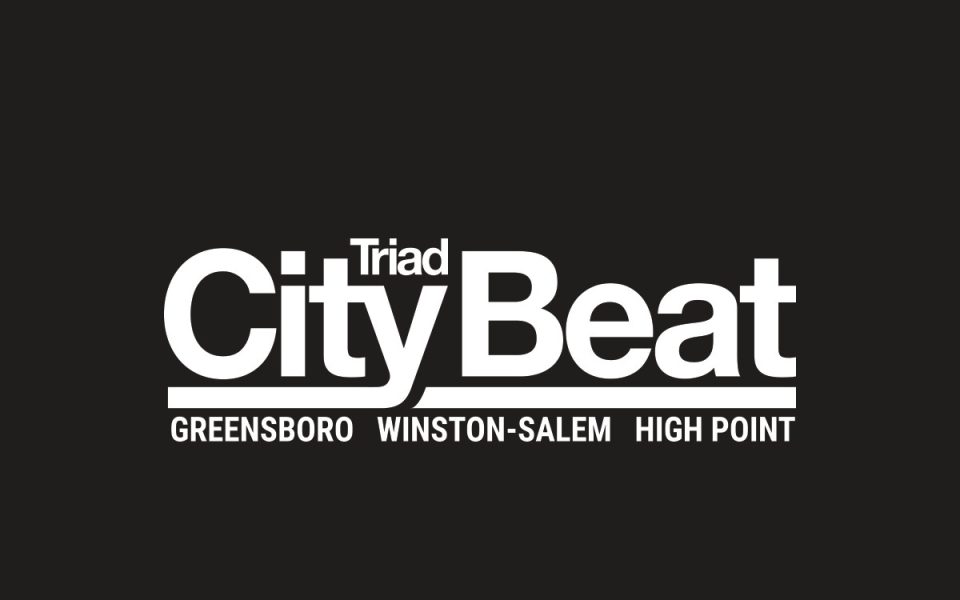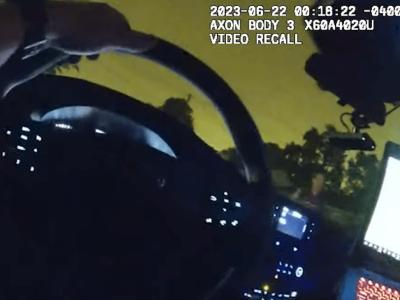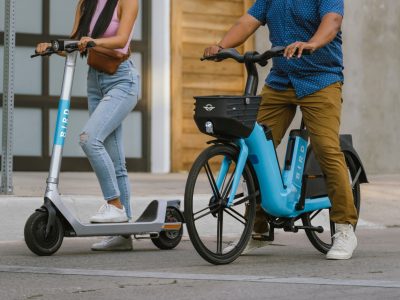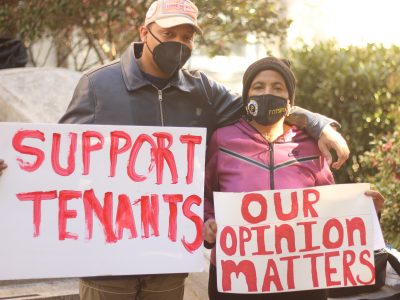by Jordan Green
There are a lot of plans for improving East Winston, but so far not much to show for it.
Marquita Wisley, a resident of the Cleveland Avenue Homes public housing community, is cautiously hopeful that the development of the Wake Forest Innovation Quarter just across US Highway 52 will have a positive impact on her neighborhood.
The Innovation Quarter, a major center for biomedical research, is developing a greenway that will be open to residents of East Winston. And city leaders hope the blossoming research park will create a demand for housing and businesses that provide services to employees.
“I wish we would have been offered some of the jobs,” Wisley said. “I think it has made a positive effect. It’s brought attention to the area. The beautification of the area stimulates an interest in our area. When they say they want to diversify the neighborhood, with the Innovation Quarter the people need a place to live.”
Wisley is a member of the Cleveland Avenue Transformation Team, part of an initiative coordinated by the Housing Authority of Winston-Salem to diversify incomes in the area and build sufficient consumer demand to support retail development. The housing authority is submitting a grant application, developed with input from the residents, to the federal government in December.
“The community understands that without higher-income families coming in, it’s going to be hard to bring in retail,” said Larry Woods, CEO of the housing authority. “Our goal is not to promote gentrification. We plan to keep the rental units at affordable rates. There could be some subsidy involved. The subsidy would be for working families.”
Poverty and infrastructure — specifically Highway 52, which runs to the west and diminishes connectivity with downtown — isolate East Winston from the rest of the city.
“If you mention East Winston to people, they don’t want to come here,” Wisley said. “They don’t see the value. When we’re mentioned on the news it’s not something good. It’s usually a shooting or something like that.”
The Winston-Salem/Forsyth County Planning Board recently recommended approval of a planning document called the East-Northeast Area Plan, which goes before Winston-Salem City Council for consideration next month. The Cleveland Avenue corridor in the heart of East Winston is part of the largely urban planning area, which stretches from Smith Reynolds Airport in the north down to Business 40 in the south, and from Highway 52 in the west to Reidsville Road in the east. Along with the Cleveland Avenue project, several initiatives have been undertaken to revitalize the area. In many cases, progress has been halting and plans have yet to yield results.
The Winston-Salem City Council endorsed the Cleveland Avenue initiative in 2011. At the request of the SG Atkins Community Development Corp., the council approved an overlay zoning district for the Martin Luther King Jr. Drive corridor the same year.
The East-Northeast Area Plan proposes to expand the new design guidelines to sections of Liberty Street and New Walkertown Road to create an urban feel, with new buildings located near the street, entrances facing the street and off-street parking to the side or to the rear of the buildings.
Martin Luther King Jr. Drive has also received attention from the Creative Corridors Coalition, a nonprofit funded by the National Endowment for the Arts that is taking advantage of the renovation of Business 40 to improve the aesthetics of bridges and roadways around downtown. The nonprofit facilitated a public workshop in 2013 to solicit input from residents and business owners in 2013. Todd Lewis, a senior civil engineer with the city, said the funding is in place for the project, but it will require approval from the state Transportation Department in Raleigh. The project is scheduled to go out to bid in October 2016.
The enhancements on Martin Luther King Jr. Drive include trees and shrubbery, along with three-foot ornamental fencing to separate the roadway from the sidewalk. Lewis said the city is working with Creative Corridors on a plan to install new crosswalks with red-stamped asphalt that mimics brickwork, similar to the design in the Innovation Quarter.
The master plan also calls for public art. Some ideas that have been discussed in the past include way-finding signage, banners and an illuminated light tower at the intersection of Fourth Street and Martin Luther King Jr. Drive. Kristen Haaf, project manager for Creative Corridors, said the nonprofit has not yet determined which public art projects will go forward.
“We are in a holding pattern on MLK waiting for the city to do some of the engineering work to establish what the base infrastructure is going to be,” Haaf said.
Lewis acknowledged that the project has undergone delays.
“The funding had not been in place, and the agreement needed to be in place between the city and the state,” he said. “The funding is in place now, so it’s starting to move.”
The East-Northeast Area Plan cites the importance of Third, Fourth and Fifth streets in linking the Innovation Quarter to Martin Luther King Jr. Drive, and proposes redeveloping land on the streets to house the workers at the research park. The plan recommends taking “advantage of the proposal by Creative Corridors to have a signature bridge over US 52 at Fourth Street with enhanced features to make Fourth Street the main connector” between the Innovation Quarter and East Winston.
Haaf said the Fourth Street corridor is not currently a priority project for Creative Corridors fundraising. “That is a concept that is totally consistent with our vision,” she said, “and that is an idea that has been discussed in our master plan.”
The city has recently taken possession of historic Union Station through eminent domain. Although the facility is just to the south of the East-Northeast planning area, it has the potential to significantly affect the area as a transit hub. With the lack of state and federal funds making the restoration of commuter rail a distant prospect, the city plans to relocate its transportation department to the building to fulfill the public purpose requirement of its acquisition. Plans also call for some of the space to be used by nonprofits and staff at Winston-Salem State University. The city has allocated $18.3 million in bond funds to renovate Union Station.
Wisley said she feels gratified that city leaders have consulted residents about plans for improving East Winston, but progress comes at a slow pace.
“They’re more apt to help us now and to sit down and ask us what we need instead of dumping things on us because it assuages their feelings of guilt,” she said.
Join the First Amendment Society, a membership that goes directly to funding TCB‘s newsroom.
We believe that reporting can save the world.
The TCB First Amendment Society recognizes the vital role of a free, unfettered press with a bundling of local experiences designed to build community, and unique engagements with our newsroom that will help you understand, and shape, local journalism’s critical role in uplifting the people in our cities.
All revenue goes directly into the newsroom as reporters’ salaries and freelance commissions.






Leave a Reply